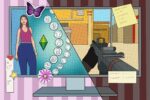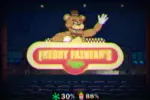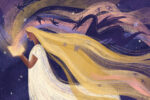CW: transphobia, descriptions of antisemitic imagery
Through her popular series “Harry Potter,” J. K. Rowling and her fantastical Wizarding World have entranced millions of readers around the globe. For over 20 years now, Rowling’s tale of witchcraft and wizardry has been one of the most popular young adult novel series in the world. She has sold approximately 500 million copies globally, and the movie adaptations netted billions of dollars with each release. While “Harry Potter” is a wildly successful franchise, the negative aspects of the series were shrouded from the public for the majority of the series’ lifespan. Nevertheless, they were made fully apparent thanks to Rowling’s recent behavior, forcing fans to look back and reflect on the dark side of their favorite series.
Rowling’s Wizarding World is full of downright bigoted and harmful tropes from start to finish. Racism, anti-semitism and slavery have been constant themes throughout the series, and, until recently, were largely ignored. Over the past few years, Rowling has gained a lot of attention for discussing her views on gender politics. While Rowling purports to be a feminist, she has made constant attempts to belittle and attack the transgender community. As a result, many have labeled her a “Trans Exclusionary Radical Feminist,” otherwise known as a TERF — a term that she frequently complains about on social media alongside whatever anti-trans rhetoric she chooses to share that day.
Now that Rowling’s intolerance is so clearly visible in the present, taking a look back through her previous work shows that she has a history of bias that pervades even this beloved franchise. The Gringotts goblins are one of the many examples of offensive tropes found in “Harry Potter.” They are a group of short, large-nosed and secretive people who manage the banks in the magical world. While many depictions of goblins across folklore have them depicted as greedy and cruel, this is on another level entirely. The depictions of Goblins in “Harry Potter” draw their inspiration from anti-Jewish stereotypes — they represent a blatant bigotry that she ignorantly perpetuates to this day.
In a 2021 episode of the podcast “The Problem with Jon Stewart,” Stewart stated “It was one of those things where I saw it on the screen and I was expecting the crowd to be like ‘holy sh*t, she did not in a wizarding world just throw Jews in there to run the f**king underground bank.’ And everyone was like, ‘Wizards.’” During this episode, they discuss the scene in “Harry Potter and the Deathly Hallows,” where the trio — Harry Potter, Ron Weasley and Hermione Granger — travel to Gringotts bank. In this section of the film, the physical appearance of the goblins is eerily reminiscent of Jewish caricatures described in works such as “The Protocols of the Elders of Zion,” — hook-nosed, short and large-eared. This only gets worse after you study the scene in the movie enough to notice the Star of David on the floor in the bank. Rowling and the production team behind the “Harry Potter” movies decided to film in an actual Jewish-owned bank while portraying creatures reminiscent of antisemitic propaganda.
The antisemitic undertones of the franchise were made evident with the release of the new and highly-anticipated video game Hogwarts: Legacy, on Feb. 10, 2023. In this game, the main antagonists are a sect of rebellious goblins aided by a wizard wielding dark magic in hopes of taking control of the Wizarding World by force. One of the frequent complaints the game’s plot has received is its allusion to blood libel. Over the course of the game, the goblin rebels attempt to steal the blood of wizards so they can use it to commit dark rituals. Blood libel is an ancient antisemitic trope that claims Jewish people use blood sacrifices to commit rituals; can you see the resemblance?
The main plot of the game is built on an antisemitic trope and it is a shame that WB Games — the video game’s publisher — would allow such a flagrantly bigoted project to be greenlit. The video game aids in the perpetuation of an antisemitic narrative that has been used to persecute the Jewish people for hundreds of years. Twitter users have noticed some other strange “coincidences” throughout the game. @HPNA points out that in game lore there is an event called the “Goblin Rebellion of 1612,” which coincides with a real historical anti-Jewish riot, known as a “Pogrom.” In the game, one of the collectible artifacts is a goblin horn said to rally troops. @MorgothArc noticed that it resembled a Shofar, a horn used in synagogues on holidays such as Yom Kippur and Rosh Hashanah.
J.K. Rowling has repeatedly shown her intolerant views in her works. Antisemitism, racism and transphobia pollute the air of the Wizarding World, and fans of “Harry Potter” should take caution when keeping up with her media. While one can attempt to separate the art from the artist, it is difficult to forget that any new purchases or digital streams will directly go into Rowling’s pocket. If you stand with marginalized communities you will stop supporting the Wizarding World of “Harry Potter.”

















